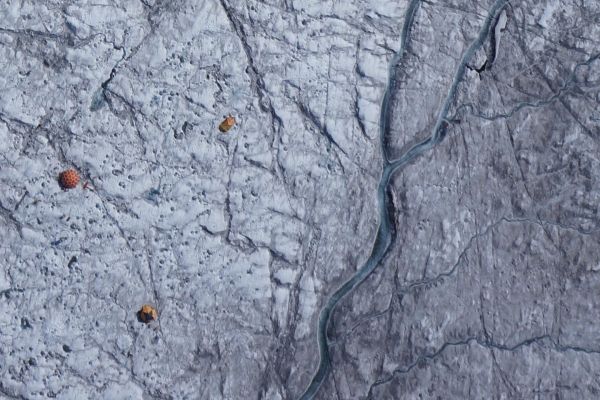The Dark Zone of Greenland ice sheet is a large continuous region on the western flank of the ice sheet; it is some 400 kilometers wide stretching about 100 kilometres up from the margin of the ice.
Some previous theories have attributed this darkening to water on top of the ice sheet – often seen as strikingly sapphire blue ponds, rivers and lakes. But a new study in Nature Communications provides a new hypothesis based on the character of the impurities on the ice surface itself.
“What we show is that the Dark Zone is covered in a finely distributed layer of dust, and black carbon, which provide nutrition for dark coloured algae. These are the main cause of the darkening.” says professor Alun Hubbard, the co-author of the study and professor at CAGE.
A dirt belt in the melt zone
The Dark Zone is a literally dirty belt of the melting area – the ablation zone – of the ice sheet. The darker this ablation zone is, the more of the sun’s energy it absorbs, and the faster the ice melts.
Read more at CAGE - Center for Arctic Gas Hydrate, Climate and Environment
Image: This drone image was captured on Aug. 5, 2014, and offers a view of the tents and scientific equipment in the Dark Snow Project. Dark ice, rich with impurities, was particularly visible east of the melt stream near the camp. (Photo: Dark Snow Project. J. Ryan/ J.Box /A.Hubbard)


